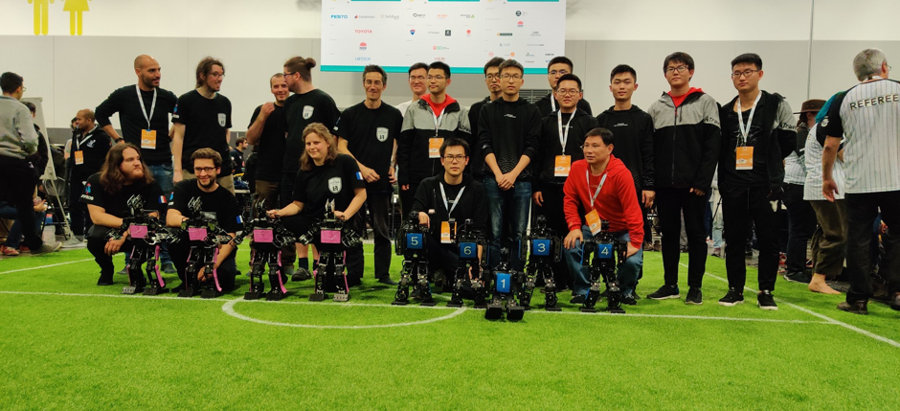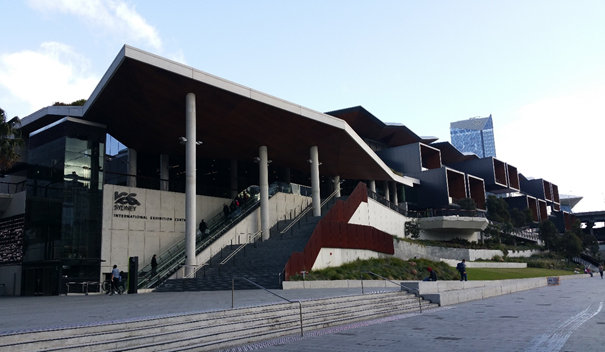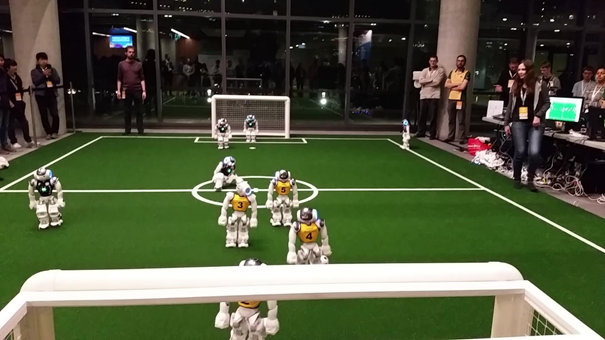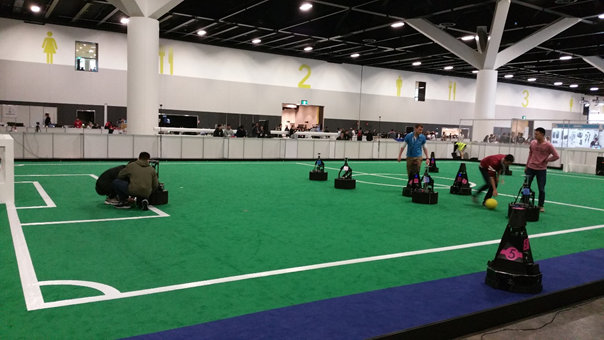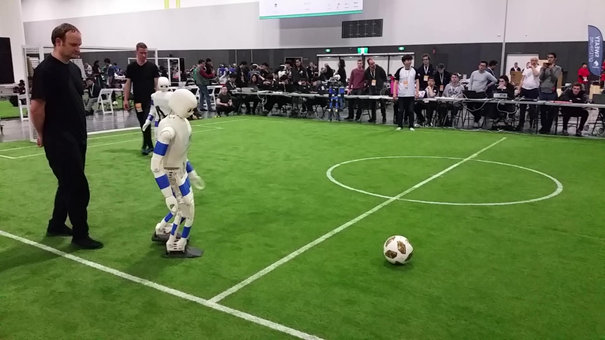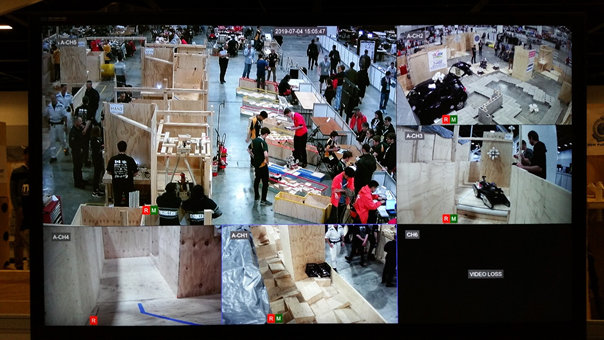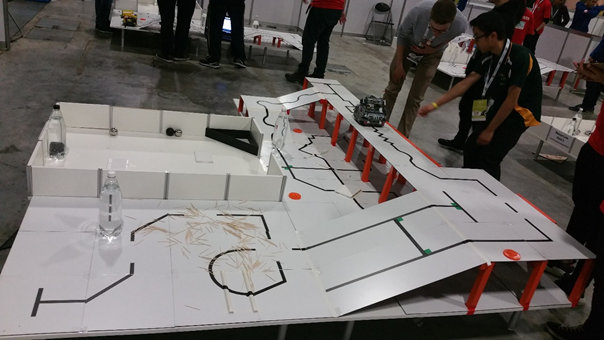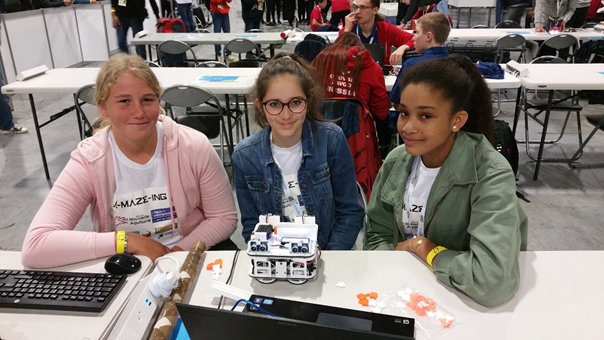A few days ago, we wrote a blogpost about the RoboCup preparations in Sydney. Today, we learn a bit more about the different challenges that the teams will have to face during this one week contest!
Presentations of the different RoboCup leagues
If you think about the RoboCup, you will probably have in mind humanoid robots playing soccer. It is indeed the original RoboCup challenge. Since then, many other challenges have been added.
Let’s start with the SPL (Standard Platform League) league, where the competitors are using NAO robots.
The rule is: same hardware for everyone! What matters is the code inside the robots. For now, the robots are moving slower than an all-humans team, but the crowd is mesmorized by all these autonomous robots playing soccer on their own!
The audience will cheer at a goalkeeper’s heroic dive to catch the ball! Meanwhile, on the Middle Size League pitches, the crowd also make some noise for the teams! The MSL teams all built their robots from scratch. These machines must be able to detect the ball, but also the other robots on the pitch. It is a really robotics challenge (machine vision)!
Here, the moves are much faster but also smoother. The robots have a real team game and are able to do some lobs during the match.
In the Small Size League, the mobile robots are smaller, and don’t have any cameras. Instead, the vision part is handled by a single camera, that has been set up above the pitch. All the robots have access to the camera data.
But the most impressive games are the one involving humanoid robots. Bipedal walking, facial recognition, SLAM, are just a few functionnalities that these robots must achieve to play and win!
In the Adult size Humanoid League, each team has two robots, followed by a human member of the team, who will catch the robot if it ever falls!
In the Kid Size Humanoid League, the robots trip, fall and get back on their feet alone! It is difficult for them to be steady, as the pitch is neither perfectly flat nor hard.
This 2019 Robocup edition is also the fourth win in a row (Kid Size Humanoid League) for the Rhoban team. Which makes them four-time World Champions! These team of experienced engineers managed to create new robots behaviours such as volley and a throw-in by hand!
The Pepper robot is also here. It is used in the @Home League, where it must move in a flat, guide its resident and locate different items.
Industrial robots are also working here, on a fully functionning model of a factory supply chain. There are also some challenges for firefighter robots, designed to help people trapped in the rubble.
RoboCup is not just a sports event, it is also a giant laboratory! The event organisers also have at heart to help young robotics talents to blossom. Which is why the RoboCup Junior has been created. It is aimed at the 13-19-year old.
Some RoboCup Junior challenges are the same as in the Major leagues (like the Soccer league or the Rescue league), the rules can be slightly changed of course. For instance, the Junior Rescue challenge involve following a line while avoiding some obstacles to a small arena. Once in the arena, the robot will have to gather and bring back some balls (the victims of the wreckage).
The French team A-Maze-Ing before the Maze challenge. Their robot has been created with the RoboCupJunior Rescue League Electronic and Motorisation Pack designed by Génération Robots!
The OnStage challenge, however, only takes place in the Junior version of the RoboCup. The teams have to create a technical and artistic performance, in which humans and robots are interacting. It is a highly demanding challenge.
What we enjoyed the most, however, are the Super-Teams! What are they? Some teams are chosen randomly to work together and take up a challenge.
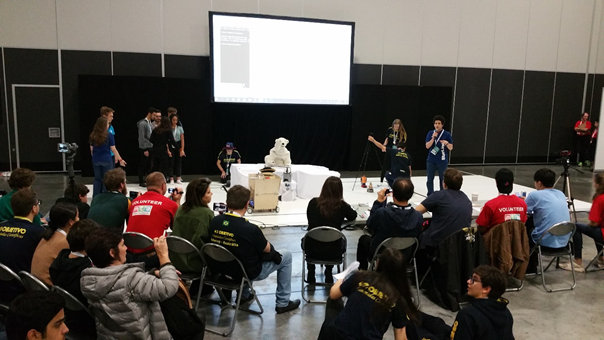
We saw many more things and robotics challenges at the Sydney RoboCup. Next year, Bordeaux, the host city for the 2020 edition of the RoboCup, will have to live up to the expectations and raise the bar!
Off course, Génération Robots will be part of the RoboCup adventure for the years to come! 🙂

